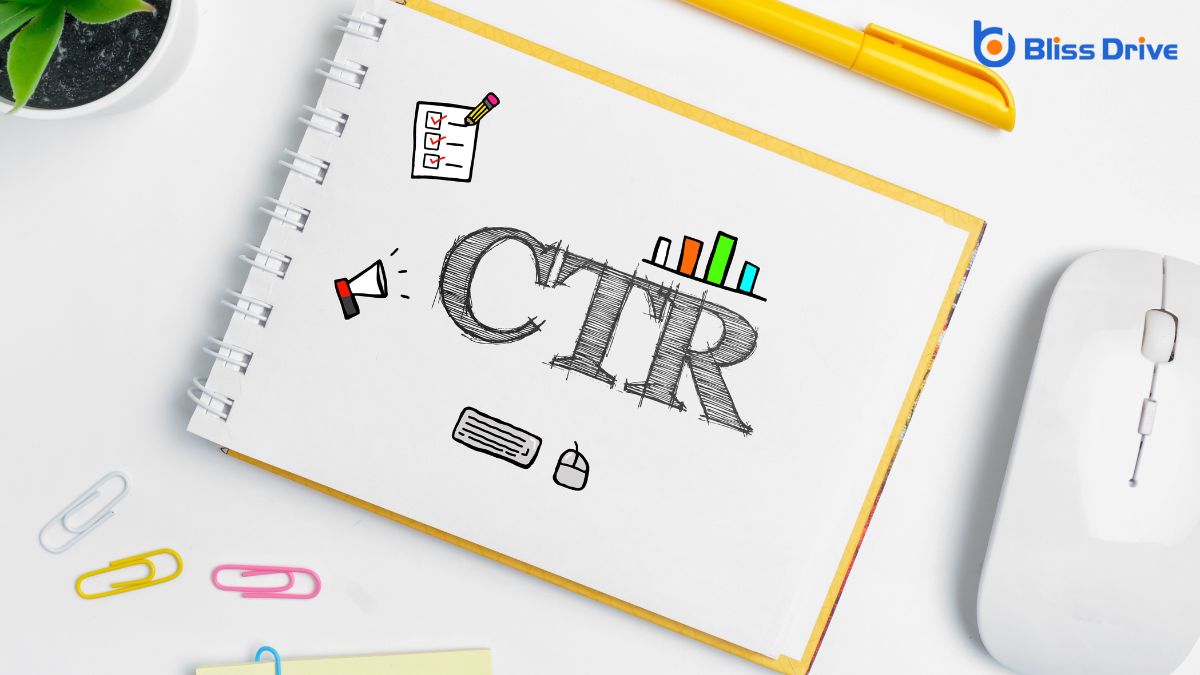Digital Marketing Services
Learn More About Us

In digital marketing, determining CTA success goes beyond just clicks. You should focus on metrics like Click-Through Rates (CTR) to gauge headline effectiveness, while conversionThe completion of a desired action by a referred user, such as making a purchase or filling out a fo... rates highlight how well visitors act on your offers. Time-on-page reveals engagementThe interactions that users have with a brand’s content on social media. depth, and bounce rates can signal if your content aligns with visitor expectations. Wondering how these metrics interplay to shape your results? There's more to uncover about optimizing CTA strategies.

When it comes to measuring the effectiveness of your digital marketing efforts, understanding Click-Through Rates (CTR) is essential. CTR reflects the percentage of people who click on your ad or link out of the total who view it. By analyzing CTR, you can gauge how compelling your content is and how well it appeals to your audience.
To boost your CTR, focus on crafting engaging headlines and compelling calls to action. Tailor your content to resonate with your target audience, ensuring relevance and clarity.
High CTR indicates that your message effectively grabs attention and prompts interaction, signaling successful engagement. Remember, CTR is a bridge between just being seen and actually engaging with your audience, highlighting areas for improvement in your marketing strategy.
Analyzing conversion rates is essential for understanding the success of your digital marketing campaigns. When you know how many visitors complete a desired action, you can gauge the effectiveness of your Call-to-Action (CTA).
Start by identifying the percentage of users who follow through after clicking your CTA. This key metric reveals how well your campaignA set of ad groups sharing a budget, targeting options, and other settings. aligns with user intent and expectations.
To improve, consider A/B testingA method of comparing two versions of a web page or app against each other to determine which one pe... different CTA designs, copy, or placementsSpecific websites or locations within websites where ads can appear.. Analyze which variations leadA potential customer referred by an affiliate who has shown interest in the product or service but h... to higher conversions.
Keep an eye on other influencing factors like user experience and website navigation. Remember, increasing conversion rates often involves fine-tuning multiple elements.
Understanding the role of time-on-page is essential in evaluating your CTA's success. When visitors spend more time on your page, it indicates they find your content engaging and relevant. This engagement offers a higher likelihood they'll follow through with your call-to-action, whether it's signing up for a newsletterA regularly distributed email containing news, updates, and content relevant to subscribers., downloading a resource, or making a purchase.
Your goal is to guarantee the content surrounding the CTA is compelling enough to keep them interested.
To optimize time-on-page, focus on delivering valuable, clear, and concise information. Use engaging visuals, easy-to-read text, and logical flow. By doing so, you’re nurturing visitors’ interest, leading them closer to taking action.
While time-on-page tells you how engaging your content is, bounce rates offerThe specific product or service being promoted by affiliates. insights into whether visitors find what they're looking for right away or leave your site too soon.
A high bounce rateThe percentage of visitors who leave a website after viewing only one page. might indicate that your landing pageThe web page a user is directed to after clicking on an affiliate link, optimized for conversions. doesn't meet visitor expectations or fails to provide clear next steps. Understanding bounce rates helps you identify if the CTA is properly placed and compelling enough to encourage further exploration.
You want visitors to engage, not just click and leave. Analyze which pages have higher bounce rates and consider revising the content or CTA placement.
Verify your message aligns with the visitor’s intent. By optimizing these elements, you can reduce bounce rates and increase the chances of converting visitors into customers.
Engagement metrics are pivotal for gauging how effectively your content resonates with your audience. They help you understand which aspects of your digital marketing strategies work and which don’t.
By focusing on these metrics, you can fine-tune your approach for better results. Here are four essential engagement metrics you should track:
Tracking these metrics will improve your CTA success.
As you aim to optimize your digital marketing efforts, recognizing the importance of scroll depthA metric that measures how far down a webpage users scroll, indicating content engagement. is essential.
Scroll depth provides a clear picture of how far users are scrolling down your page. This metric helps you understand if visitors are engaging with your content or bouncing off too early.
By analyzing scroll depth, you can identify which sections capture attention and which don’t. It’s a crucial tool for evaluating content placement and understanding user interest.
If users consistently drop off before reaching your CTA, you might need to reposition it or enhance your content’s appeal.
Leveraging scroll depth insights allows you to make informed decisions, ultimately driving better engagement and improving your overall conversion rates.
Building on the insights gained from understanding scroll depth, tracking user interactionAny action taken by a user on social media, such as likes, comments, shares, or retweets. offers another layer of detail to optimize your digital marketing strategies.
You can measure how users interact with your content, revealing what catches their interest and where they drop off. Here's how you can track these interactions effectively:
These insights help refine your strategies for better CTA success.

While tracking user interaction provides valuable insights, heat maps offer a visual representation of where users focus their attention on your site. They’re essential tools for understanding which elements capture interest, guiding you to optimize your call-to-action (CTA) placement effectively.
By highlighting areas of high engagement, you can adjust design elements to direct focus where it matters most.
With heat maps, notice where users click, hover, or scroll. If your CTA isn’t getting attention, perhaps it’s too far down the page or overshadowed by other elements.
Heat maps help you visualize user paths, ensuring CTAs are strategically positioned for maximum impact. This understanding enables you to enhance user experience, converting visits into actions more efficiently than by guesswork alone.
To truly gauge CTA success in digital marketing, you need to focus on several key metrics. Monitor your CTR to see how effectively you're capturing interest, and analyze conversion rates to determine if visitors are taking desired actions. Keep an eye on time-on-page and bounce rates to assess content engagement and alignment with expectations. Don't forget about scroll depth, user interactions, and heat maps, which offer valuable insights to refine your strategy and optimize campaign performance.
